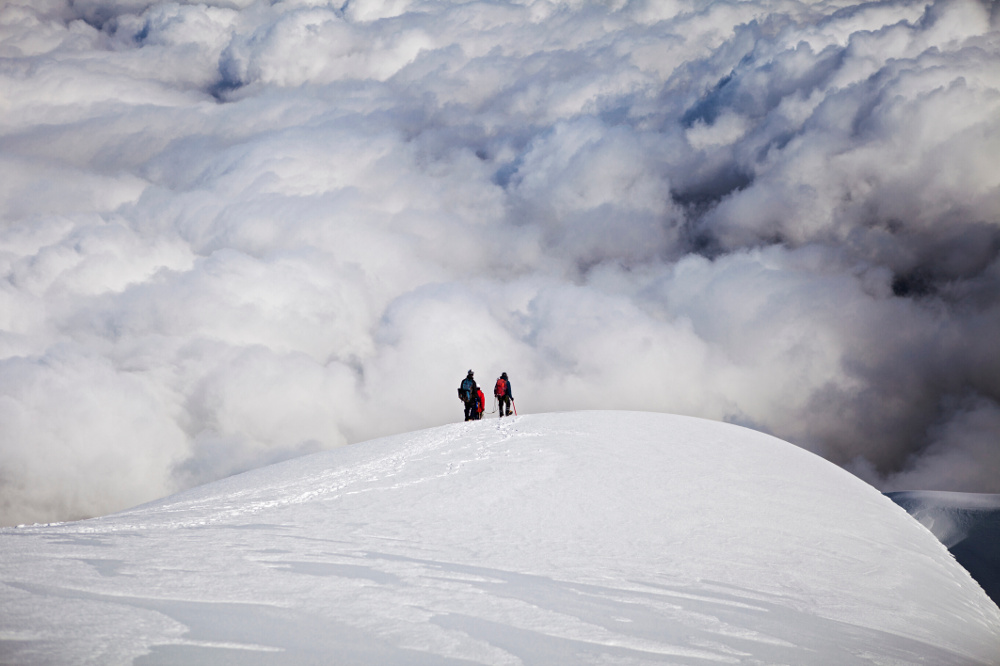Sitting at our desk, lying in bed, lounging on the sofa; there are numerous times where we can feel pretty big in the world we occupy.
However, it's all a facade brought on by our confined, vanilla every-day lives. Change the tempo, venture out and find one of the last remaining vast expanses on Earth and you will discover just how insignificant we are.
1. Redwood National And State Parks
California, USA
World famous for their other-worldly appearance, the Redwood National and State Parks were most notably featured as the setting of Endor in Star Wars Episode VI: Return of the Jedi.
The 540-square-kilometres of parkland is home to the coast redwood, one of the tallest trees on Earth at about 115 metres tall.
If these weren't enough to dwarf every living human, the actual expanse of forest would be more than capable. Its statuesque presence with rich-green foliage and hanging white mist hushes almost every visitor into silent contemplation.
2. Iguazu Falls
Brazil & Argentina
A true behemoth of Mother Nature, Iguazu Falls separate Brazil and Argentina. A total of 275 waterfalls run along the 2.7-kilometre-long edge on either side of the Iguazu River, ranging from 60 to 82 metres high.
The Devil's Throat is the most recognisable fall and is absolutely enormous at 82 metres high, 150 metres wide and 700 metres long.
Walking along the boardwalks offers an up-close view of the falls. However, those who swim at the top and venture close to the edge garner a true understanding of how easily Iguazu can swallow you.
3. Great Wall Of China
China
Contrary to popular culture, the Great Wall of China cannot be seen from space. However, debunking this myth doesn't make China's most-famous landmark any less impressive.
Dating back as early as 7th century BC, the Great Wall runs from Dandong to Lop Lake with an official length of more than 21,000 kilometres (most relics are found in the Ming Dynasty section, which is 8,852 kilometres long).
Many areas along the Great Wall are impressive, but most people visit the section at Badaling. Here the Wall weaves through dense forest along the peaks of an undulating mountain crop.
If you walk its ramparts, don't be surprised to experience the feeling of endlessness in the mountains around you and in the Great Wall itself.
Love nature? America’s Best National Parks For 2016
Great Wall sightseeing tips: How To Experience The Great Wall Of China
4. Lake Eyre
South Australia
Australia's largest lake (when it's full) is an arresting sight, covering a total area of 9,500 square kilometres.
Lake Eyre is typically empty or at the most has a very shallow water depth (1.5-metre three-year average). However, this only adds to its ethereal appeal.
Visit during drought and you'll be able to walk across the Lake's salty surface with the skeletons of fish underfoot. The reflective white ground stretches out to the horizon, seemingly infinite with its reach.
For true scope of Lake Eyre's size, you can take a scenic flight, which highlights all the individual basins and shores.
5. Cave Of Swallows
Mexico
Aptly named, caving or BASE jumping into the Cave of Swallows feels like falling into the stomach of a giant.
The largest cave shaft in the world is scarily vast, descending 370 metres to its floor, where the space inside widens to about 303x135 metres.
Those who enter the cave are no more than a speck as they lower themselves between the rough, rocky walls where few creatures live.
6. Cotopaxi
Ecuador
Climbing to the summit of Cotopaxi draws back the curtain on a view that only a few people are fortunate enough to witness in their lifetimes.
The active volcano is one of the world's highest at 5,897 metres. It's a gruelling climb to the peak, which can only be accomplished by experienced climbers.
However, those who reach the top usually find themselves above the clouds. Standing in ankle-deep snow, the world below is completely covered in a white, fluffy carpet.
7. Preikestolen
Norway
Perched on the edge of Preikestolen, entranced by the pure and rugged Nowegian nature beneath, you wish with all possible conviction that nothing ever steals this memory.
The view is what's most impressive, but stand awhile and soak up the absence of noise and civilisation. Wait long enough and you start to lose all thought to the distant cliffs and the Lysefjorden sitting at the bottom of a sheer drop under your feet.
If you were to disappear – simply 'POP!' and vanish – Preikestolen wouldn't even notice or alter in any way.













